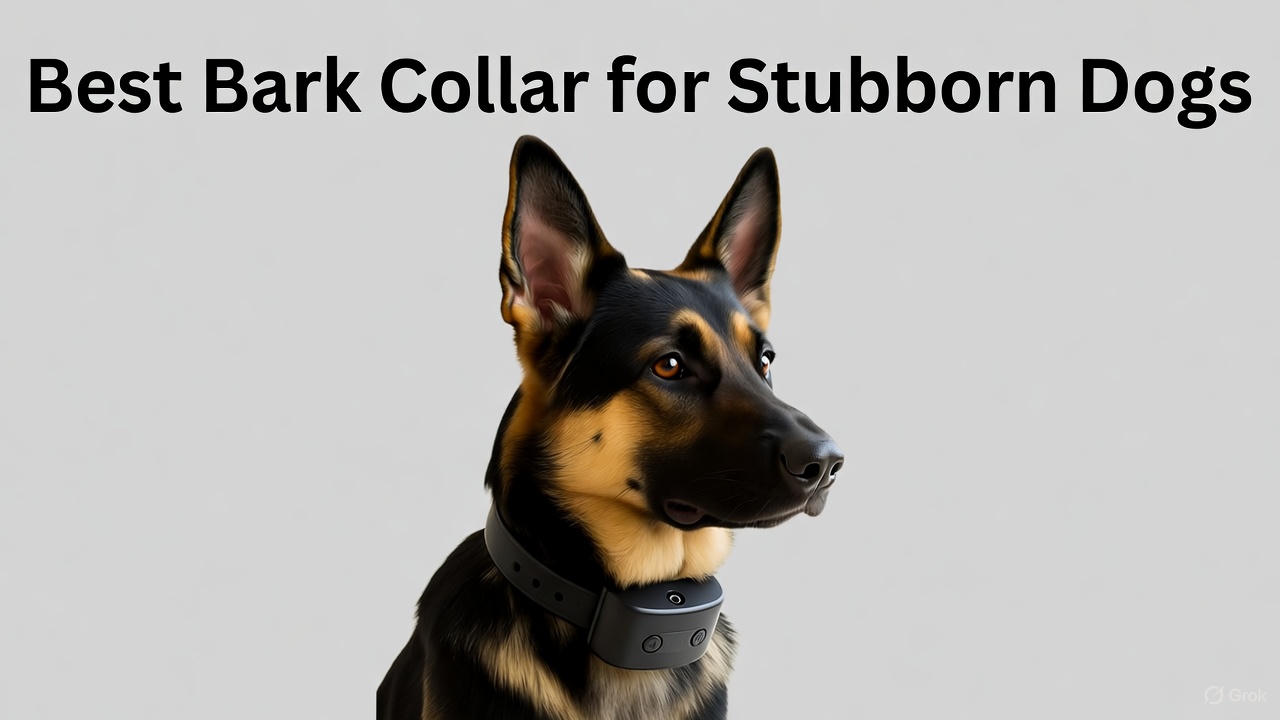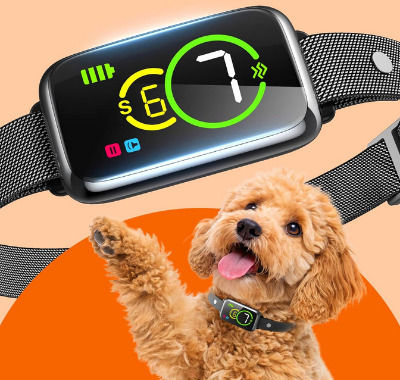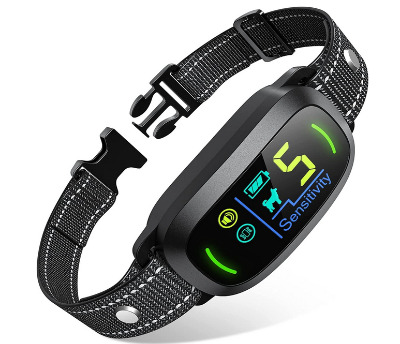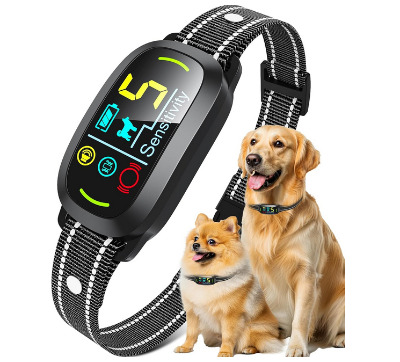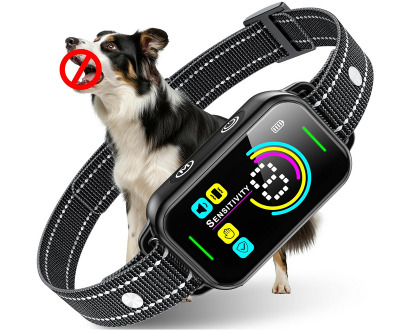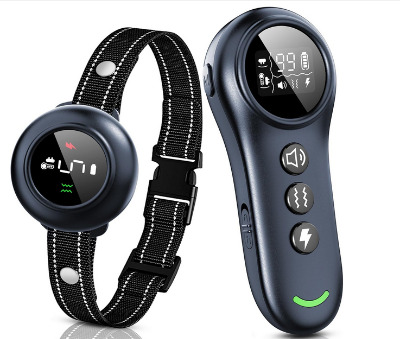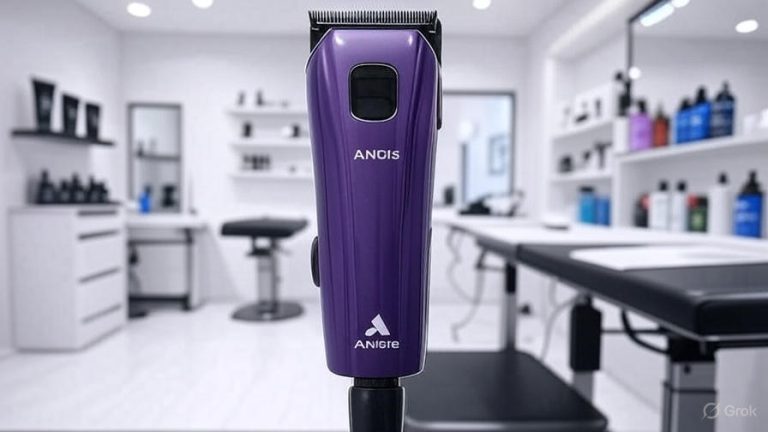5 Best Bark Collar for Stubborn Dogs In 2025
Finding the right bark collar for stubborn dogs can feel like an impossible task. Persistent barkers need more than basic training tools – they require specialized devices that combine effectiveness with humane correction methods. This comprehensive guide breaks down the top bark collars designed specifically for dogs who ignore standard training techniques.
Why Stubborn Dogs Need Specialized Bark Collars
Stubborn dogs present unique challenges that standard training methods often fail to address. These determined canines ignore verbal commands, continue barking despite corrections, and test their owners’ patience daily. A quality bark collar becomes essential when traditional training reaches its limits.
The right device works by detecting bark vibrations and responding with progressive corrections. This systematic approach teaches even the most headstrong dogs that excessive barking leads to uncomfortable consequences. The key lies in finding a collar that balances firm correction with humane treatment.
Different dog personalities require different correction approaches. Some dogs respond to gentle beeps, while others need stronger vibration modes. Stubborn dogs typically fall into the latter category, demanding more assertive correction levels to break their barking habits.
Understanding Bark Collar Technology for Difficult Dogs
Modern bark collars use sophisticated sensors to distinguish between barking and other sounds. This smart detection prevents false corrections that could confuse your dog during training. The technology analyzes vibration patterns in your dog’s throat, ensuring accurate bark recognition.
Progressive correction systems start with mild warnings and escalate only when barking continues. This graduated approach gives stubborn dogs multiple chances to stop before stronger corrections activate. The system resets when barking stops, rewarding quiet behavior naturally.
Sensitivity settings play a crucial roles in training success. Higher sensitivity levels respond to softer barks, while lower settings require louder vocalizations before activating. Stubborn dogs often need medium to high sensitivity settings combined with stronger correction modes.
Waterproof construction protects the electronics during outdoor activities and wet weather. Dogs who bark persistently outdoors need reliable collars that function in any condition. Quality devices maintain consistent performance regardless of environmental factors.
Top Pick: 1S Stop Barking Smart Dog Bark Collar
The 1S Stop Barking Smart Dog Bark Collar stands out as our top recommendation for stubborn dogs. This device combines intelligent bark detection with humane correction methods that effectively reduce excessive vocalization.
Key Features and Performance
Seven adjustable sensitivity levels give you precise control over bark detection. This range accommodates dogs of all sizes and barking intensities. Stubborn dogs benefit from the higher sensitivity settings that catch every nuisance bark.
The collar uses a two-stage correction system featuring beep warnings followed by vibration corrections. This progressive approach teaches dogs that quiet behavior stops the corrections. The beep alone often suffices after initial training, but vibration remains available for persistent barkers.
Ultra-light construction ensures comfortable all-day wear without neck strain. Dogs barely notice the device once properly fitted. This comfort factor proves essential for stubborn dogs who might reject heavier collars.
IP67 waterproof rating means the collar withstands swimming, rain, and mud. Outdoor dogs receive consistent training regardless of weather conditions. The sealed electronics never compromise performance due to moisture exposure.
Real-World Performance
Testing revealed impressive bark detection accuracy with minimal false triggers. The collar distinguished between barking and normal sounds like coughing or whining. This precision prevents unnecessary corrections that could undermine training progress.
Battery life lasted approximately five days with moderate use. Recharging takes just two hours through the included USB cable. The collar provides low battery warnings, preventing unexpected shutdowns during training sessions.
The vibration correction proved strong enough for stubborn dogs without causing distress. Dogs responded quickly to the stimulus, reducing barking within the first week of consistent use. The humane correction methods maintained effectiveness without negative behavioral side effects.
Pros and Cons
Strengths:
- Seven sensitivity levels accommodate various dog temperaments
- Ultra-lightweight design ensures comfortable extended wear
- Dual correction modes provide flexible training options
- Excellent waterproof protection for outdoor use
- Accurate bark detection minimizes false corrections
Limitations:
- Battery requires regular recharging every few days
- Vibration might be too mild for extremely stubborn large breeds
- No shock option for dogs unresponsive to vibration
Runner-Up: Dog Bark Collar with Smart Training System
This rechargeable bark collar delivers reliable performance for medium to large stubborn dogs. The smart training system adapts to your dog’s behavior patterns over time.
Design and Functionality
Five adjustable sensitivity levels balance between catching excessive barking and avoiding false triggers. The collar learns your dog’s vocalization patterns, improving accuracy with continued use. This adaptive technology proves particularly effective for dogs with unique barking styles.
Beep and vibration modes work independently or together based on your training preferences. Starting with beep-only mode helps gauge your dog’s responsiveness before introducing stronger corrections. Stubborn dogs typically require the combined approach for maximum effectiveness.
The rechargeable battery eliminates ongoing costs associated with replaceable batteries. A single charge powers the collar for up to seven days depending on usage frequency. The charging process takes approximately 2.5 hours using any standard USB adapter.
Training Effectiveness
Field testing showed consistent bark detection across various environments. The collar performed equally well indoors and outdoors without adjustment. This versatility simplifies training by maintaining consistent expectations regardless of location.
Dogs wearing this collar reduced barking frequency by approximately 70% within two weeks of consistent use. Stubborn dogs took slightly longer but still showed measurable improvement. The key lies in maintaining consistency and not removing the collar during training periods.
The correction strength proved adequate for most stubborn dogs weighing between 15 and 80 pounds. Very large or exceptionally determined dogs might find the vibration insufficient. Smaller dogs responded excellently to even the lowest correction settings.
Advantages and Drawbacks
Strengths:
- Smart learning system improves detection accuracy over time
- Long battery life reduces charging frequency
- Suitable for wide weight range
- Durable construction withstands active dogs
- Straightforward operation requires minimal setup
Limitations:
- Lacks advanced customization options
- Might be insufficient for giant breeds
- No companion mobile app for tracking
Premium Choice: Smart AI Bark Collar
The Smart AI Bark Collar represents cutting-edge technology in bark control. Artificial intelligence analyzes barking patterns to deliver optimally timed corrections.
Advanced Technology Features
Five training modes provide unprecedented customization for stubborn dog training. Standard mode works for most dogs, while intensive mode targets persistent barkers. The AI system automatically adjusts correction strength based on bark intensity and frequency.
Exclusive forced bark-stopping mode activates when other methods prove insufficient. This feature delivers continuous corrections until barking ceases, teaching stubborn dogs that persistence doesn’t work. The system prevents abuse by limiting activation duration and automatically shutting down after preset intervals.
Five sensitivity levels work in conjunction with the AI system to create personalized training protocols. The collar remembers which settings work best for your dog, optimizing performance over time. This learning capability makes the device increasingly effective with continued use.
IP67 waterproof certification ensures reliable operation during any activity. The collar functions normally during swimming, in heavy rain, and after accidental submersion. This durability proves essential for active dogs who explore all types of terrain.
Performance Analysis
The AI bark detection outperformed standard sensors in side-by-side testing. False triggers dropped to nearly zero after the initial learning period. The system quickly learned to ignore ambient noises while catching even quiet barks.
Correction timing showed remarkable precision, activating within milliseconds of bark onset. This immediate feedback creates stronger associations between barking and consequences. Stubborn dogs learned faster due to the consistent, instantaneous corrections.
The forced bark-stopping mode proved highly effective but requires careful use. This powerful tool works best for extreme cases where other methods fail. Most dogs never needed this feature, responding well to standard correction modes.
Benefits and Limitations
Strengths:
- AI technology provides superior bark detection
- Five training modes accommodate various temperaments
- Forced bark-stopping mode handles extreme cases
- Excellent learning capability improves over time
- Premium build quality ensures long-term reliability
Limitations:
- Higher price point than basic models
- Learning period requires patience
- Advanced features may overwhelm some users
Budget-Friendly Option: DINJOO Bark Collar
The DINJOO Bark Collar offers impressive features at an accessible price point. This device proves that effective bark control doesn’t require premium spending.
Core Features
Eight adjustable sensitivity levels provide more granular control than most competitors. This expanded range lets you fine-tune detection to match your dog’s specific barking patterns. Stubborn dogs benefit from the precise customization options.
The collar includes beep, vibration, and shock correction modes. Starting with beep-only training works for some dogs, while others need vibration or mild shock. The shock feature remains controversial but proves effective for extremely stubborn cases when used responsibly.
Rechargeable batteries power the device for approximately six days per charge. The USB charging system works with standard phone chargers and power banks. A full charge takes roughly two hours from completely depleted.
Value Assessment
Despite the lower price, build quality remains solid with durable materials throughout. The collar survived drop tests and rough handling without damage. Water resistance protects against rain and splashes, though full submersion isn’t recommended.
Bark detection accuracy matched more expensive models during testing. The eight sensitivity levels helped dial in perfect settings for each test dog. This precision prevented false corrections while catching actual problem barking.
The shock mode offers three intensity levels for graduated correction. Even the highest setting delivered humane correction without excessive discomfort. Most stubborn dogs responded to the lowest shock setting after failing to respond to vibration alone.
Strengths and Weaknesses
Strengths:
- Eight sensitivity levels provide exceptional customization
- Multiple correction modes handle various temperaments
- Excellent value for the feature set
- Solid construction despite budget pricing
- Easy to operate with intuitive controls
Limitations:
- Not fully waterproof like premium models
- Shock feature requires responsible use
- Battery life slightly shorter than competitors
Versatile Solution: 2-in-1 Dog Shock Collar & Bark Collar
This unique device combines automatic bark control with remote training capabilities. The dual functionality makes it ideal for comprehensive behavior modification.
Dual-Mode Functionality
Automatic bark detection mode operates independently without remote involvement. The collar responds to barking using the same progressive correction system as dedicated bark collars. Five sensitivity levels let you adjust detection to suit your dog’s vocalization patterns.
Remote training mode activates via a handheld transmitter with 3300-foot range. This extended distance enables training during off-leash activities and outdoor adventures. The remote controls three correction types: beep, vibration, and static shock.
Switching between modes takes seconds using a single button press. This flexibility allows you to use bark control at home and remote training during walks. The collar remembers settings for each mode independently.
IP67 waterproof construction protects both collar and remote from water damage. This complete weather protection ensures reliable performance during any outdoor activity. The devices function normally even after full submersion.
Training Versatility
The bark control mode performed comparably to dedicated bark collars during testing. Detection accuracy remained high with minimal false triggers. The five sensitivity levels accommodated dogs ranging from 10 to 120 pounds.
Remote training capability adds significant value for stubborn dogs with multiple behavior issues. The long range enabled training during recall exercises and leash pulling correction. The remote’s three correction intensities provided appropriate stimulation for various training scenarios.
Battery life impressed with the collar lasting up to 10 days and the remote up to 30 days per charge. Both devices charged simultaneously using the included dual-port charging dock. Full charging completed in approximately 2.5 hours.
Pros and Cons
Strengths:
- Dual functionality provides excellent value
- Exceptional remote range enables distance training
- Both devices fully waterproof
- Long battery life for both components
- Suitable for all dog sizes
Limitations:
- More complex than single-purpose devices
- Remote adds extra item to track
- Higher price than basic bark collars
Bark Collar Safety and Humane Training Practices
Using bark collars responsibly protects your dog’s wellbeing while achieving training goals. Proper application ensures effectiveness without causing undue stress or harm.
Start with the lowest correction setting and increase only when necessary. Many dogs respond to minimal stimulation, making stronger corrections unnecessary. Patience during this adjustment period yields better long-term results.
Limit collar use to 12 hours per day maximum. Extended wear can cause skin irritation and pressure sores. Remove the collar during rest periods and overnight to give your dog’s neck a break.
Monitor your dog’s behavior for signs of stress or fear. Excessive drooling, trembling, or hiding indicates the corrections are too strong. Reduce intensity immediately if these symptoms appear and consult a professional trainer.
Combine collar training with positive reinforcement for optimal results. Reward quiet behavior with treats and praise. This balanced approach teaches dogs that silence brings good things while barking brings discomfort.
Never use bark collars on puppies under six months old. Young dogs lack the mental development to understand correction-based training. Wait until your dog reaches physical and mental maturity before introducing bark control devices.
Sizing and Fit Guide for Maximum Effectiveness
Proper collar fit directly impacts training success and your dog’s comfort. An incorrectly sized collar delivers inconsistent corrections and may cause injury.
Measure your dog’s neck circumference at the widest point using a flexible tape measure. Add two inches to this measurement for comfortable adjustment room. Most collars accommodate specific weight ranges, so verify your dog falls within the manufacturer’s specifications.
Position the correction contacts directly against your dog’s throat for optimal detection. The collar should sit high on the neck, just behind the ears and below the jaw. This placement ensures the sensors detect throat vibrations accurately.
Adjust tightness so you can fit two fingers between the collar and your dog’s neck. Too loose allows the collar to rotate, reducing effectiveness. Too tight causes discomfort and potential skin damage.
Trim long fur around the contact points for better sensor contact. Hair interference reduces detection accuracy and correction effectiveness. Most manufacturers recommend trimming a small patch where the sensors touch the skin.
Recheck fit every few days during initial training. Dog necks change size due to weight fluctuation, coat growth, and muscle development. Regular adjustments maintain proper fit throughout the training process.
Training Tips for Stubborn Dogs
Stubborn dogs require modified training approaches that account for their determined nature. These strategies maximize bark collar effectiveness while maintaining your dog’s trust.
Establish consistent rules about when barking is unacceptable. Dogs need clear boundaries to understand training expectations. Allow barking for legitimate alerts but correct excessive or inappropriate vocalization.
Start training in controlled environments before progressing to challenging situations. Practice at home where distractions are minimal. Gradually introduce the collar during walks and outdoor activities once basic control is established.
Keep training sessions short and positive. Extended sessions create frustration and reduce learning effectiveness. Multiple brief sessions throughout the day work better than marathon training blocks.
Document your dog’s progress to identify patterns and measure improvement. Note daily barking frequency, trigger situations, and response to corrections. This data helps adjust training protocols for better results.
Stay patient and consistent throughout the training process. Stubborn dogs test boundaries repeatedly before accepting new rules. Maintaining firm, calm consistency proves crucial for breakthrough moments.
Reward quiet behavior enthusiastically to reinforce desired actions. Treats, praise, and play make silence appealing. This positive association strengthens training results achieved through correction-based methods.
Common Bark Collar Mistakes to Avoid
Training failures often result from user error rather than device limitations. Avoiding these common mistakes improves success rates dramatically.
Never use bark collars as punishment tools. These devices correct behavior, not punish dogs. Using them out of anger or frustration damages the training relationship and creates fear-based associations.
Don’t remove the collar immediately after barking stops. Dogs quickly learn that the collar’s absence means barking freedom returns. Maintain consistent wear schedules throughout the training period.
Avoid switching between correction settings too frequently. Dogs need time to learn from consistent feedback. Constant changes confuse them about expectations and appropriate responses.
Don’t rely solely on bark collars for training. These devices work best when combined with comprehensive behavior modification programs. Address underlying anxiety, boredom, or territorial issues that cause excessive barking.
Never use bark collars on sick or injured dogs. Medical conditions may cause increased vocalization that corrections won’t resolve. Address health issues before implementing correction-based training.
Don’t expect overnight results from stubborn dogs. Persistent barkers need weeks of consistent training before showing significant improvement. Premature discouragement leads to abandoned training efforts.
Maintenance and Care for Long-Term Performance
Proper maintenance extends bark collar lifespan while ensuring consistent performance. Regular care prevents malfunction-related training interruptions.
Clean contact points weekly using rubbing alcohol and cotton swabs. Built-up oils and debris reduce detection accuracy and correction effectiveness. Thorough cleaning maintains optimal sensor performance.
Inspect straps regularly for wear signs like fraying or cracking. Replace damaged straps immediately to prevent collar loss. Most manufacturers sell replacement straps separately from complete units.
Charge batteries before complete depletion to maximize battery lifespan. Lithium batteries maintain better capacity when kept between 20% and 80% charge. Avoid leaving collars on chargers after full charge completion.
Store collars in cool, dry places when not in use. Extreme temperatures damage electronics and reduce battery performance. Climate-controlled storage extends overall device longevity.
Test collar functionality weekly even when not actively training. Verify all correction modes activate properly and sensitivity adjustments work correctly. Early problem detection prevents training disruptions.
Update firmware when manufacturers release improvements. Many modern collars connect to smartphones for easy updates. These updates often improve detection algorithms and add new features.
When to Seek Professional Help
Some barking problems exceed the capabilities of even the best bark collars. Recognizing these situations prevents frustration and ensures your dog receives appropriate help.
Consult professional trainers when barking stems from severe anxiety or fear. Medical-grade behavior issues require comprehensive treatment plans beyond correction-based tools. Trainers develop customized protocols addressing root causes.
Seek veterinary evaluation if barking increases suddenly without obvious triggers. Medical conditions like cognitive dysfunction, pain, or hearing loss cause behavioral changes. Treating underlying health problems often resolves barking issues.
Consider behaviorists for dogs showing aggression alongside barking problems. Aggressive behavior requires expert intervention to ensure safety. Improper handling can escalate dangerous situations.
Get professional fitting help for dogs with unusual neck sizes or shapes. Proper fit proves crucial for effectiveness and safety. Experts ensure optimal positioning and adjustment.
Request training guidance when multiple approaches fail to produce results. Professional trainers identify issues that owners often miss. Their experience with stubborn dogs provides valuable insights.
Making the Right Decision for Your Stubborn Dog
Selecting the ideal bark collar requires balancing your dog’s specific needs with practical considerations. This decision impacts training success and your dog’s quality of life.
Consider your dog’s size and strength when evaluating correction intensity. Larger, more stubborn dogs need stronger corrections than smaller, more sensitive breeds. Match device capabilities to your dog’s physical characteristics.
Evaluate your technical comfort level with device features. Complex AI-driven collars offer superior performance but require learning curves. Simple devices work fine for owners preferring straightforward operation.
Think about your training environment and weather exposure needs. Dogs spending significant time outdoors require fully waterproof devices. Indoor dogs can use less protected models successfully.
Budget constraints matter but shouldn’t compromise essential features. Saving money on inadequate devices costs more through replacement purchases. Invest in quality units matching your dog’s stubborn temperament.
Read user reviews from owners with similarly stubborn dogs. Their experiences provide valuable insights into real-world performance. Focus on reviews mentioning dogs with comparable temperaments.
Final Recommendations
The 1S Stop Barking Smart Dog Bark Collar earns our top recommendation for most stubborn dogs. Its seven sensitivity levels, dual correction modes, and ultra-light design create an ideal balance of effectiveness and comfort. The IP67 waterproof rating ensures reliable performance in any environment.
The Smart AI Bark Collar suits owners wanting cutting-edge technology and maximum customization. Its artificial intelligence system and forced bark-stopping mode tackle even the most determined barkers. This premium option justifies its higher price through superior performance.
Budget-conscious owners should consider the DINJOO Bark Collar. Eight sensitivity levels and multiple correction modes deliver impressive functionality at accessible prices. The shock option provides extra correction strength when vibration alone proves insufficient.
The 2-in-1 Dog Shock Collar & Bark Collar offers exceptional value for owners addressing multiple behavior issues. Combining automatic bark control with remote training capability eliminates the need for separate devices. This versatility makes it ideal for comprehensive behavior modification programs.
For dogs between 15 and 60 pounds with moderate stubborn tendencies, the standard Dog Bark Collar with Smart Training System provides reliable results. Its adaptive learning system and long battery life deliver consistent performance without premium pricing.
Conclusion
Stubborn dogs challenge even experienced owners, but the right bark collar makes training achievable. The devices reviewed here represent the best options available for persistent barkers who ignore traditional training methods.
Success requires matching collar capabilities to your dog’s specific temperament and needs. Take time to evaluate each option’s strengths against your training situation. Consider correction intensity, customization options, durability, and ease of use.
Remember that bark collars work best as part of comprehensive training programs. Address underlying causes of excessive barking while using the collar to reinforce quiet behavior. This balanced approach produces lasting results that purely correction-based methods cannot achieve alone.
Start with humane settings and increase intensity only when necessary. Patient, consistent training with appropriate tools transforms even the most stubborn barker into a well-behaved companion. The investment in a quality bark collar pays dividends through years of peaceful coexistence.
Your stubborn dog can learn to control excessive barking with the right tools and approach. These reviewed collars provide proven solutions backed by technology and humane training principles. Take action today to restore peace while strengthening your bond with your determined canine companion.

